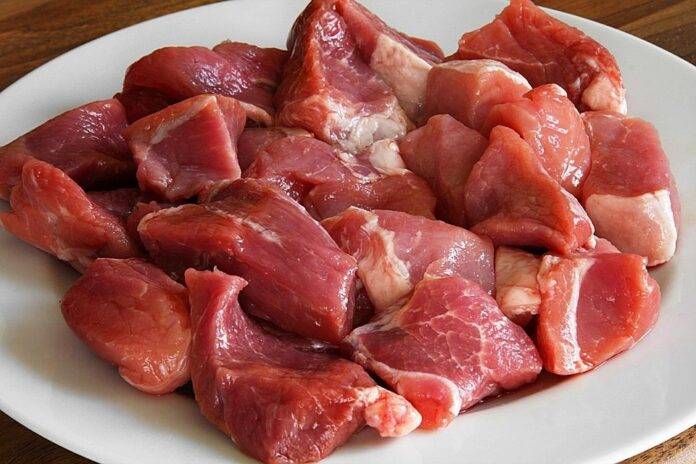Introduction
The demand for plant-based and cultivated swine products has surged in recent years, driven by a combination of health, environmental, and ethical considerations. This report delves into the top ten consumer trends shaping this burgeoning market. It analyzes market data, consumer preferences, and financial impacts to paint a comprehensive picture of the current landscape and future directions for plant-based and cultivated swine products.
1. Rise of Health-Conscious Consumers
Consumers are increasingly prioritizing health in their food choices. A survey by the International Food Information Council indicates that 73% of consumers consider nutrition when deciding on food purchases. This trend has led to a significant uptick in the plant-based market, which reached an estimated value of $7 billion in 2021 and is projected to grow at a CAGR of 11.9% through 2027. Companies like Beyond Meat and Impossible Foods are capitalizing on this trend by offering products that boast high protein content and lower saturated fat.
2. Environmental Awareness
The environmental impact of meat production, particularly from traditional livestock farming, has prompted consumers to seek sustainable alternatives. According to a study published in Nature, livestock production accounts for 77% of the greenhouse gas emissions from the food sector. This has led to a 30% increase in the consumption of plant-based proteins between 2019 and 2022. Brands such as Oatly and Just Egg are gaining traction in this space, marketing their products as environmentally friendly alternatives to traditional animal products.
3. Ethical Considerations and Animal Welfare
Increasing awareness of animal welfare issues has shifted consumer preferences towards plant-based and cultivated options. The Humane Society International reports that 65% of consumers are concerned about the treatment of animals in food production. This ethical stance is driving growth in cultivated meat, which is projected to reach a market size of $25 billion by 2030. Companies like Mosa Meat and Memphis Meats are at the forefront of this trend, offering lab-grown products that appeal to ethically-minded consumers.
4. Technological Innovation in Food Production
Advancements in food technology have made it easier and more cost-effective to produce plant-based and cultivated products. The development of precision fermentation and cellular agriculture has opened up new avenues for creating meat alternatives. For instance, the cost of producing lab-grown meat has decreased by 70% over the past two years, making it a viable option for mass production. Companies like Aleph Farms and Eat Just are harnessing these technologies to bring innovative products to market.
5. Expansion of Food Service and Retail Offerings
The food service industry has begun to embrace plant-based and cultivated products, with major chains like Burger King and KFC introducing meat alternatives to their menus. According to a report by the Plant-Based Foods Association, the food service sector has seen a 20% increase in plant-based menu items in the past year alone. Retailers are also expanding their offerings; grocery stores now stock a variety of plant-based meats, cheeses, and dairy alternatives, catering to the growing demand.
6. Customization and Personalization
Consumers are increasingly seeking personalized food experiences. Brands that allow customization of plant-based products are gaining market share. Research from Mintel indicates that 43% of consumers would be more likely to purchase a product if they could customize it to their tastes. Companies like Tofurky and Impossible Foods are exploring ways to allow consumers to tailor their products, enhancing the overall user experience.
7. Millennials and Gen Z Driving Demand
Younger generations are leading the charge in the shift towards plant-based and cultivated foods. According to a report from Nielsen, 48% of Gen Z and 43% of Millennials identify as flexitarians, consuming less meat and more plant-based alternatives. This demographic is also more likely to be influenced by social media marketing, with companies utilizing platforms like Instagram and TikTok to reach these consumers effectively.
8. Global Expansion of Plant-Based Markets
The plant-based market is not confined to North America and Europe; it is experiencing rapid growth in Asia-Pacific and Latin America. A report from Research and Markets indicates that the Asia-Pacific region is expected to witness a CAGR of 14.4% in the plant-based sector between 2021 and 2027. Major players are investing in localized products to cater to regional tastes, with companies like Oatly expanding their operations in China and Brazil.
9. Regulatory Support for Alternative Proteins
Governments worldwide are beginning to support the development and acceptance of plant-based and cultivated proteins. The European Union has launched several initiatives to promote sustainable food systems, while the U.S. has seen increased funding for agricultural research in alternative protein sources. This regulatory support fosters innovation and enhances consumer confidence in these products.
10. Integration of Plant-Based Options in Traditional Diets
The incorporation of plant-based options in traditional cuisines is becoming increasingly common. Chefs and home cooks alike are experimenting with plant-based substitutes in classic recipes. A survey by the American Culinary Federation found that 61% of chefs are incorporating plant-based proteins into their menus. This trend not only caters to health-conscious consumers but also enhances the culinary experience, making it more accessible for everyone.
Conclusion
The landscape of plant-based and cultivated swine demand is evolving rapidly, influenced by consumer preferences for health, sustainability, and ethics. The trends outlined in this report highlight a significant shift towards alternative proteins, driven by technological advancements, demographic changes, and increased awareness of environmental issues. As these trends continue to shape consumer behavior, the market for plant-based and cultivated products is poised for substantial growth in the coming years, presenting opportunities for innovation and investment.
[Read More: The State of the Global Pork, Swine, Pig, and Bacon Industry: A Comprehensive 2025 Report]




